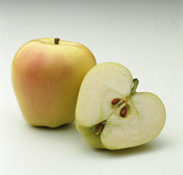
The body is a miraculous machine. It has a brain at the top that serves as its central control system. It is supported by a skeletal and muscular system that enable movement. The circulatory system delivers necessary components that keep the body in proper checks-&-balances through blood flow. And, the skin covers it all, providing protection that also heats and cools.
The digestive system is another amazing part of the human body. It takes what is consumed through the mouth and processes it so the body can use what is beneficial while moving what is not, or deemed excess, out of the body.
As we learned in grade school, the digestive process actually begins in the mouth. When chewing, saliva flow delivers oral acids that help to break foods down so, once swallowed, the stomach acids can take over.
This is one of the reasons why it’s so important to “chew your food properly,” as our parents taught us early on. Proper chewing allows our oral acids to interact with smaller and smaller bits in order to be more efficient.
So, you would think an acid designed specifically for the mouth would be safe for the mouth, particularly for something as present in the mouth as your teeth? While these digestive acids are highly beneficial, there are some challenges when it comes to tooth enamel.
Because teeth are so hard, we seldom worry about the enamel coating that protects teeth. Yet, oral acids are so strong that they actually soften this hard shell when acids flow into the mouth.
Every time you eat or drink, these acids flow into the oral cavity, washing over teeth. Once activated, this acid attack lasts about 20 to 30 minutes. So, when you begin eating lunch, the acid attack begins and doesn’t subside until a half-hour after you finish that last bite of tuna salad.
As potent as oral acids are, the potency becomes even worse when mixed with acidic foods and beverages. For example, in acidity of citrus, tomatoes, coffee, spicy foods, and colas ramp up the level of acidity taking place in the mouth.
For a double whammy, add sugar to the mix. Eating french fries dipped in catsup is one example. The sugar and acidity of the tomatoes in catsup mixed with the starch of the potatoes (which converts into sugar in the mouth) blends in with the oral acids that are meant to aid in digestion, creating a recipe for cavities.
Let’s say you’re socializing at a restaurant with friends while eating these fries. And, let’s say you are drinking a sweetened cola with the fries as well. Tooth enamel is not only in a softer state throughout this time, making it more vulnerable to decay, it is enduring extreme levels of acid and high levels of sugar – which begins with the first french fry or sip of cola and lasts for 20 or so minutes after eating and drinking is done.
Speaking of colas, one of the biggest challenges for teeth is sipping a cola over an extended period of time. From the first sip, your mouth is getting a double dose of acid — from both natural digestive acids AND from the acidity in the beverage.
With each sip, you prolong the acid attack by another 20 – 30 minutes. Sipping a cola over the course of an hour or so creates an extended period of acid, translating into enamel that is less capable of protecting teeth from cavities.
Think brushing after eating or drinking is the solution? Take your time and ‘don’t rush to brush.’ Wait a half an hour after eating or drinking before heading to the sink. The abrasiveness of tooth paste and toothbrush bristles can easily wear down enamel when in this softened state. If possible, swish with plain water or take large swallows of water that wash over teeth until it’s safe to brush. This will dilute the acids in your mouth.
Frequent snackers, even when eating low acid, low sugar foods, are also vulnerable to the damage of acid attacks because of the repetition. When snacking, keep choices healthy (carrots vs. candy bars). And, drink plenty of water to keep the mouth moist so saliva can easily move acids and bacteria-forming particles out of the mouth quickly.
For children, monitor snacking frequency AND what they are eating and drinking. Fruit juices are NOT healthy choices when it comes to teeth. Add some chopped strawberries to filtered water for a healthy, low sugar drink. The body will get far more from this than cola or processed fruit juice and your smile will thank you with fewer cavities.
We want your smile to be problem-free! Be conscious of what happens when you eat or drink and use the simple measures mentioned above to curtail treatment time and expense for repairs that are often easy to avoid.